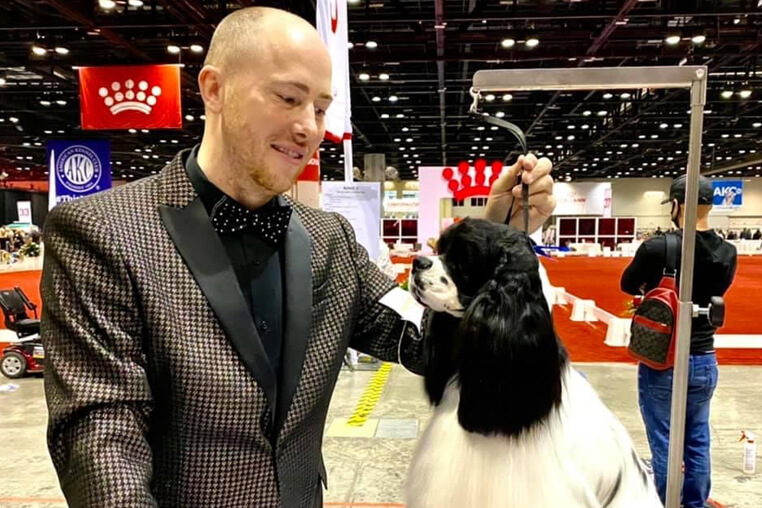What is Separation Anxiety?
Separation anxiety is a psychological syndrome that manifests as a state of panic, anxiety, and general unease that your Cocker Spaniel displays when it is left alone for any length of time. While boredom sometimes manifests as overturning the trash, chewing slippers, or other materials with strong smells, separation anxiety manifests more aggressively. This condition is popularly called Separation distress. This distress is your dog’s response to the fear that you might not return. Every dog is prone to Separation anxiety, but Cocker Spaniels even more so. The reason is that they are warm, loving, attached, and highly dependent on their humans for affection.
How to tell your Cocker Spaniel has separation anxiety?
A dog that has not learned its boundaries and a dog that has separation anxiety are very different. A dog with separation anxiety develops the following traits:
- Acts nervous when it senses you are about to leave
- Chips its nails or injures itself trying to get to you
- Scratches the door the entire time you are gone
- Chews on pieces of furniture and howls till you return
- Follows you around the house, refusing to be left alone
- When your housebroken dog urinates and defecates around the house
- Refuses to eat or drink in your absence
- Frantic greetings when you return, sometimes causing injury
- Non-stop barking when you are away from home
- Excessive salivation and gnawing on its body parts
- Inability to settle when its owner returns
- Pacing and Panting
The first step to diagnosing Separation Anxiety is seeing a Vet. Your Veterinarian will be able to determine if your Cocker Spaniel is reacting to new stimuli or if it is a severe condition that requires treatment.
Causes of separation anxiety in Cocker Spaniels
The causes of separation anxiety are:
1. Fear:
Fear is a typical reaction to intimidating or frightening situations. Anxiety is the response to the fear of such circumstances, whether real or perceived. Such anxiety might arise when your Spaniel faces new environments or situations, new toys, strange people, new animals. Even new surfaces like grass, tile, or wood floors can cause fear. Although this fear is usually short-lived for some dogs, it is not so for others.
2. Age

In older dogs, separation anxiety can be a symptom of Canine Cognitive Dysfunction. Canine cognitive dysfunction (CCD) is a behavioral syndrome in older dogs. Older dogs with CCD are disoriented start showing modifications in their behavior and interactions with their owners and other pets. They begin to have issues with vision, smell, sleep, memory, and ordinary activities. CCD is just like dementia for dogs. Because of these changes, these dogs begin to get anxious and do not want to be left alone. A familiar presence around the home gives them comfort.
3. Separation
When a Spaniel loses a family member, companion, or routine, this can cause distress for the dog. Abandoned or re-homed pets also face anxiety because of fear of what might happen in their new living situations.
4. Traumatic environmental events
Traumatic events like confining your dog in one space for too long can cause considerable distress. Dogs that go days without food and hours without water are understandably anxious when their owner is leaving. The fear of mistreatment in past living situations will send any dog over the edge. They may fear returning to such conditions, and sounds, smells, or anything that reminds them of those past situations may cause them distress.
How to deal with Separation Anxiety?
Your Veterinarian is the best person to determine the kind of Separation anxiety your dog has. It can be a response to specific situations managed with some behavior and lifestyle modification. It can also be a reaction to drugs, other undiagnosed illnesses, or medications. In some cases, medication is used to treat it. If it is progressively aggressive, it most likely has to be treated with drugs. After diagnosing Separation anxiety, the next step is to determine the course of treatment. Usually, it involves administering medication to lessen the aggression then applying behavior training to teach your dog to learn new coping and response strategies and behaviors.
Veterinary Medication
Anti-depressants and anti-anxiety meds help to manage a lot of the symptoms while behavior training goes on. Some off-label medications like Amitriptyline, Paxil, Zoloft, Xanax are a few of those usually prescribed.
Alternative Medication and Therapy

A few people who have tried L-theanine swear by its usefulness in treating Separation Anxiety. L-theanine is a free-form amino acid. It improves mental health in users, humans, and dogs alike. One can also try Comfort Zone scent Diffuser or some form of flower essence.
Counter conditioning and Desensitization
Counter conditioning is a behavior modification approach that entails changing your dog’s response to a stimulus using pleasant stimuli to encourage a satisfying reaction. Desensitization is exchanging the wrong action with the right one using response substitution. Counter conditioning deals with the mood, while Desensitization deals with behavior. For example, you pair the sound of your door or your shoes with your Spaniel’s favorite treat. This way, they know that your leaving and returning are good things. This technique is used hand in hand with Desensitization, where you introduce your Spaniel to things that cause him anxiety in smaller doses. This way, you can slowly edge out wrong responses to those stimuli.
Behavioral Modification
Train your dog to sit and focus on you instead of having an exaggerated response to loud noise. That every wrong action does not receive any positive reaction from you and that your arrival and departure should not be an occasion will go a long way in easing your burdens.A few other things you might try in case your Spaniel only shows a low level of anxiety are:
- Feed him before you leave
- Keep to comfortable routines
- Take him to a dog sitter if you are leaving for long periods.
- Reward good behavior
The earlier you work on your Cocker Spaniels separation anxiety, the better for everyone. A lot of dogs are coming down with this condition following the return to work of their owners. For them, life as they know it is disrupted, so they need to learn new routines and behaviors to help them cope better. Your Spaniel does not know any better; you do, that’s why you’re here! Try using some of the tips shared with you. Hopefully, they work well for everyone.

Leave A Comment